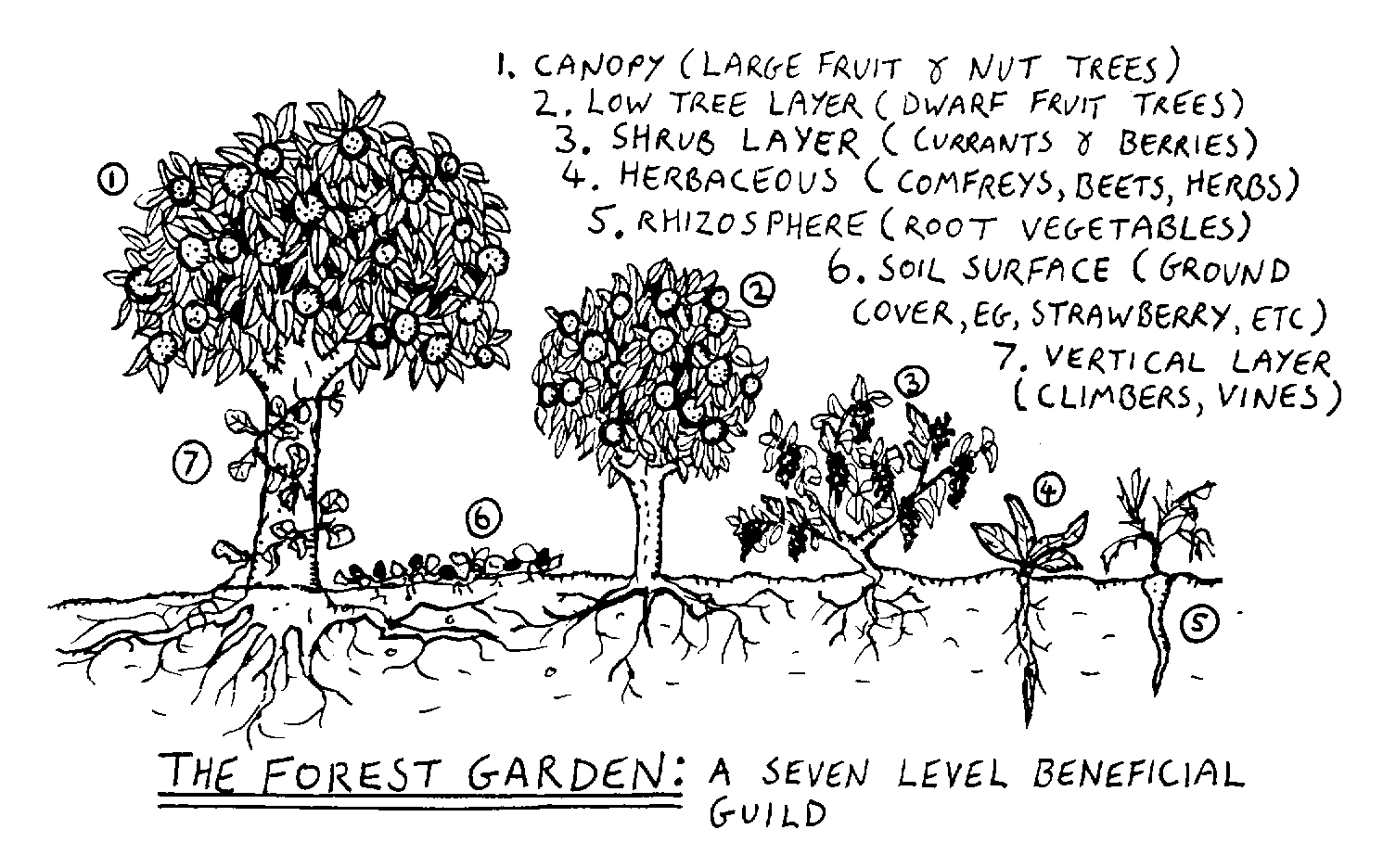What Is A Food Forest?
What’s the difference between a food forest and orchard, you ask?
An orchard is typically a monoculture of one particular fruit, which is highly inefficient… A food forest (a polyculture) grows a great variety of fruit trees, nut trees, support trees or crops (nitrogen-fixing) that can also provide food and fodder, and lumber trees.
One of the main benefits of a large mixed polyculture (like a food forest) over a monoculture is that early, medium, and late varieties of fruit species can be planted, as well as having a mixture of different fruit species. This means that all fruit does not ripen at the same time, rather you can strategically plan when you’ll reap harvests. This way, you’ve got fresh fruit nearly year-round, and it will reduce your surplus, so you’ll waste less than if you had to harvest all your produce at once. No need for freezing, refrigerating, canning, or selling off whatever you can’t use yourself… unless you want to.
A food forest starts with 90% support trees and 10% productive trees. As the productive trees mature, the support trees are gradually removed to create space until you’re eventually left with 10% support trees and 90% productive trees.
 Suitable productive and support trees vary by climate, so you’ll need to do some research online to find the best productive (fruit and lumber) and support trees for your region. Careful consideration now will pay dividends for decades to come—for you and for generations after you have gone.
Suitable productive and support trees vary by climate, so you’ll need to do some research online to find the best productive (fruit and lumber) and support trees for your region. Careful consideration now will pay dividends for decades to come—for you and for generations after you have gone.
The following are great examples of temperate-climate trees that work well in food forests:
- Apples
- Honey
- Locust
- Walnuts
- Juniper
- Pecans
- Chestnut
- Cherries
- Hazelnut
- Pears
- Oak
- Mulberry
